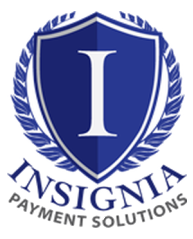The United States is now a few steps closer to hosting 21st century payment systems. The Clearing House, a payment company that operates the nation’s only private sector automated clearing house (ACH) network, just named two partners in an ambitious plan to create a real-time system that accommodates both consumer and business payments.
VodaLink Ltd. is a dominant player in the U.K. payments space, and Fidelity National Information Services (FIS), a technology firm that provides payment and other back-end services to about 3,000 U.S. banks and credit unions, are now working with TCH to build a real-time payment system.
Meanwhile, Early Warning Services LLC, a risk management and fraud prevention company owned by many of the largest banks in the United States, is acquiring clearXchange, a person-to-person (P2P) digital payment platform that is owned by many of those same banks. In a joint statement the chief executive officers of Early Warning’s bank owners said “Our customers want the ability to make payments to anyone, in real-time, making funds instantly available in the recipient’s bank account.” The owner banks are Bank of America Corp., BB&T Corp., Capital One Financial Corp., JPMorgan Chase & Co., U.S. Bancorp and Wells Fargo & Co. Many of these same banks also hold ownership interests in TCH.
THC and its bank owners are trying to keep in step with international trends, said Nasreen Quibria, Managing Director of Q Insights, a Boston area research and consulting firm. “We already have pockets of innovation here in the U.S.,” she said. She pointed to initiatives like Fiserv Inc.’s Popmoney P2P network, PayNet, a real-time payment network operated by FIS, and ClearXchange. “We really have to move [to ubiquitous faster payments] and there needs to be some larger organization that gets the industry moving. So it’s good that TCH is taking this on,” she said.
Real-time priority
“Our real-time payment system will enable customers across the country to make secure, convenient payments instantaneously,” Jim Aramanda, CEO at TCH, said about the VodaLink agreement.
VodaLink created the underlying technology for and manages the U.K.’s Faster Payments Service, which assures same-day settlement for most consumer and business electronic payments. The company also provided the underlying technology for a near-real-time payment system in Singapore and known as FAST.
There is a big push, internationally, for infrastructure improvements that can support faster payments (that is, as near as possible to real time). More than 14 countries are now in the process of modernizing their payment system infrastructures, including the United States. Combined, those economies account for 45 percent of global credit transfers, according to the international consultancy McKinsey & Co.
But as NACHA ‒ The Electronic Payments Association, noted in a recent white paper “real time can mean many different things with vastly different implications to users of the system.” In fact some “real-time” payments are just clearing faster, and intra-day. The paper, Real Time in Real Life: The Impact of a Real-Time Payments System on its Users, identifies several characteristics it said are “essential” to any real-time payment systems in the United States. These include:
- 24/7 availability
- Near-immediate (within seconds) authorizations or rejections of payments
- Posting and funds availability within seconds of transaction initiation
- Irrevocability
- Use of message formats that meet international standards (and ensure global interoperability)
- A proxy database that allows end users to send and receive real-time payments without needing to know recipients’ bank account information.
U.S. road map for faster payments
The Federal Reserve created a road map for faster payments and has been prodding U.S. banks to take up the mantel of change. The Consumer Financial Protection Bureau also made its views known, insisting that consumer protection be a top priority of any new real-time payment system that gets developed in the U.S.
It’s a heady task. “The U.S. has really just begun to think seriously about how a real-time payments platform would take shape,” said Sarah Grotta, Director of Debit Advisory Services at Mercator Advisory Group. “There are many challenging questions to consider regarding cost, leadership, ongoing management, and if a business case for faster payments really exists for its stakeholders.” Grotta is co-author of the Seizing the Opportunity of a U.S. Real-Time Network report just published by Mercator.
FIS said the partnership with TCH advances both organizations’ goals to modernize payments. Aramanda agreed. “From day one, building a ubiquitous system has been a top priority, and with FIS’ thousands of touch points across the financial services industry, we are a step closer to delivering ubiquitous, real-time payments to customers,” he said.
TCH, once known as the New York Clearing House, is the oldest payment company in the United States. It was founded as a bank clearing house in 1853 and is now cooperatively owned by the largest banks in the country. It competes directly against the Fed in providing ACH, image check clearing and wire transfer services to financial institutions large and small. TCH claims to handle 50 percent of nongovernment ACH transactions in the country.
TCH is not alone in heeding the Fed’s road map. NACHA said it will begin phasing in rules to support same-day ACH payments beginning September 2016. And the Fed, which already offers same-day ACH payments to banks and credit unions, said it supports NACHA’s efforts.

